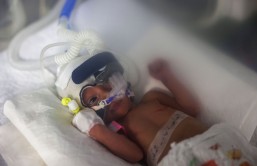Certain yellow dyes found in everyday household products might contain toxic chemicals, according to a recent study performed by scientists Rutgers University.
The study, published in this month's Environmental Health Perspectives, found that some yellow dyes used for such products as bath towels, t-shirts and notebooks contained a potentially harmful chemical, according to ABC News.
PCB 11 is a chemical found in yellow dyes used for notebooks, paint and clothing, author of the study and associate environmental chemistry professor Lisa Rodenburg told ABC.
"PCBs cause a whole range of really worrisome health problems," Rodenburg said during a Monday interview with "Good Morning America."
Scientists have found connections between PCB and multiple ailments in people, including skin irritation, birth defects, and severe acne.
"There is enough evidence that there could be health effects from this specific kind of PBC that we should investigate further," Rodenburg continued.
Limited amounts of these chemical pigments are allowed to be added in paints and dyes under the Toxic Substances Control Act - testers found PCB in each of the maps, magazine advertisements, postcards and newsprint they studied.
But avoiding yellow household products isn't the final answer to this issue - PBC can still permeate the air and water, leaving people vulnerable to the toxins.
"We know that everyone is going to be exposed to these things sooner than later," Rodenburg told the GMA hosts. "You can't really avoid contact with every printed material in the world. The PCBs get out of that printed material and they get into the air, so whether you like it or not, everyone is breathing this stuff in."
Mother Michelle Noehres said the sheer amount of potentially contaminated products on the marked was "the scariest thing about this."
"We're talking about the color yellow, which is in so many things. You can't shop your way out of that," Noehres said.
But Rodenburg stressed that these were merely initial tests, and more study needed to be done on PCBs for further information.








